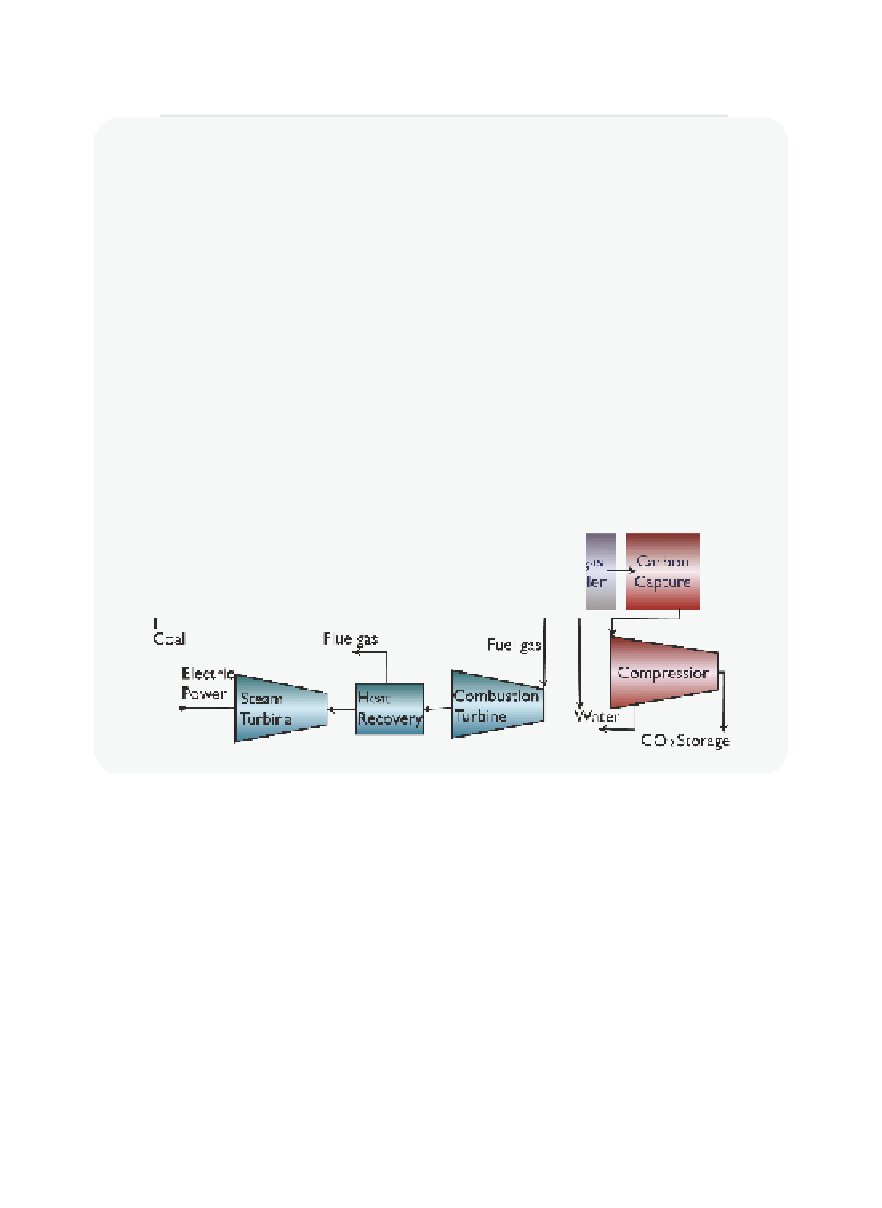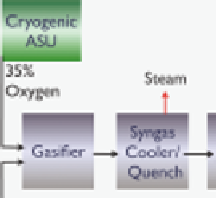Environmental Engineering Reference
In-Depth Information
Box 4.1.3
IGCC (Pre-combustion carbon capture)
The integrated gasifi cation combined cycle (IGCC) process relies on the conversion of
coal into syngas. Syngas is a mixture of CO and H
2
, and is formed by partially oxidizing
coal in a coal gasifi er. A water gas shift reactor, which converts water and carbon
monoxide into hydrogen and carbon dioxide, is used to increase the amount of hydro-
gen in the mixture. Before the fuel goes into the burner, the CO
2
is separated from the
H
2
, and the H
2
is subsequently burned to produce the heat for generating the steam.
In the IGCC process, the CO
2
separation involves a mixture of hydrogen, carbon mon-
oxide, and carbon dioxide at high pressure.
requires a signifi cant refi tting, which is not always possible for various
reasons. But for new power plants, one does not have these same con-
straints. Depending on whether or not funding exists to build new coal-
fi red power plants, pre-combustion capture could be a viable alternative
to post-combustion technology. Another factor to consider is that, at
present, not all technologies are in an equal state of development. For
example, post-combustion through amine scrubbing has been around
since 1930 [4.2], and is ready to be implemented. In contrast, technologies
like chemical looping are still in the development stage.
We will come back to this concept of a “best” capture method sev-
eral times in this chapter, but for the moment it is important to realize that
carbon capture has not been a very active area of research. For a very
long time the emission of CO
2
was not seen as a real problem, so if we














Search WWH ::

Custom Search